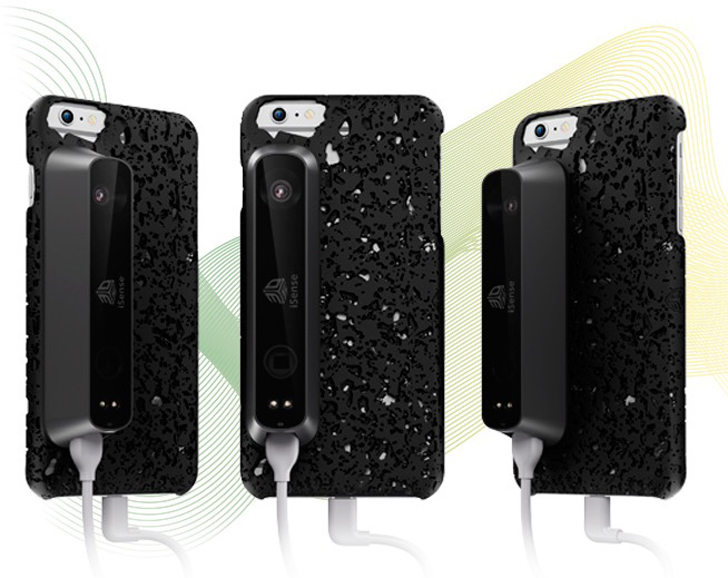Jerry Fisher unexpectedly found himself in legal hot water after publishing 3D models of a famous Michelangelo statue located on Augustana College’s campus. Mr. Fisher used hundreds of photographs of the statue to create a 3D model. After uploading the model to MakerBot’s Thingiverse, Augustana College requested that Mr. Fisher take it down, on the grounds that he had violated copyright law.[1]
The merit of Augustana College’s assertion of copyright infringement is questionable, at best. But Jerry Fisher’s story provides a glimpse of the Wild West that the democratization of 3D scanning and printing could become.
It is well known that 3D printing technology is developing at a rapid pace. This is despite the fact that most home 3D printers can use only limited materials and are pretty slow. Industrial 3D printers can use a broader range of materials, but they are slow, too. However, advances in 3D printing technology are enabling faster print speeds, greater choice of materials, and the printing of complex, functional objects. For instance, electronic circuits and drone components can now be printed using Voxel8’s platform. Carbon 3D’s CLIP 3D printing technology appears to print 25-100 times faster than other Vat Photopolymerization printers available today. HP says its Multi Jet Fusion printers are much faster than existing machines.
Similarly, 3D scanning technology (also known as photogrammetry) is also developing rapidly. For example, Autodesk’s free 123D Catch app allows a user to upload photos of a desired object, then automatically stitches them together into a 3D printable model.[2] Other companies are developing portable 3D scanners with faster scan speeds, like Matterport which has developed a handheld scanner that enables the digitization of objects and rooms in minutes. Recently, 3D Systems partnered with Occipital to develop an iPhone case that connects a tiny 3D scanner to the phone.[3] This technology, currently available for $499, can be used to turn any iPhone 6 or iPad into a 3D scanner.
The rapid pace of technology development in 3D printing and scanning will inevitably reach a point where anybody can scan an object and print a copy from anywhere, including in the privacy of one’s own home. Or companies (or the military) may 3D scan and print the parts they need, rather than buying them or their digital blueprints from OEMs.
The combination of 3D scanning and 3D printing is a powerful tool for avoiding and defeating IP and traditional business models. If anyone can scan and print objects at home or within their company walls (or on a Navy ship at sea), IP infringement, intentional or not, may become widespread. Because such scanning and printing will be difficult to detect, and because parts and products resulting from 3D scanning and printing may eventually become indistinguishable from originals, IP owners may not be able to identify infringers or infringements. Furthermore, the availability of free software, such as the Disarming Corruptor, which distorts and encrypts digital blueprints to enable the sharing of IP-protected or banned items (such as guns), makes it even more difficult to catch infringers.[4] These factors may make it impractical or impossible to enforce IP rights, potentially rendering some IP irrelevant. As predicted by Gartner, 3D printing may result in $100 billion per year in IP-related losses, due in part to the ease with which individuals (or counterfeiters) can infringe IP rights.[5] 3D scanning may be an important catalyst for such losses.
If IP owners become aware of such infringement, they can sue, but the very nature of 3D scanning and printing may substantially hinder or prevent IP owners from learning of such infringement. Dealing with such IP infringement will require more creative thinking. Digital rights management probably is not a solution because it cannot guard against creating digital blueprints with a 3D scanner, the 3D printing of which would infringe IP rights. So-called scan-to-print patent claims may be a partial solution, but only for 3D scanned and printed parts or products that IP owners are able to identify in the marketplace. The more private the scanning and printing activity, the less effective this solution will be. Another possible solution, beefing up the IP laws, has the same limitations. Moreover, the current trend of the U.S. Courts and Congress is to weaken IP, not strengthen it.
In the near term, avoiding IP through 3D scanning and printing will be limited by the sophistication of the technology. But in the long term, companies whose parts and products are vulnerable to 3D scanning and printing without them knowing about it will need to find creative, value-added solutions to maintain their legacy businesses. The time to start planning is now.
[1] See, http://blog.sketchfab.com/post/113347242824/3d-scanning-and-the-law-cultural-heritage.
[2] See, http://singularityhub.com/2012/09/15/free-123d-catch-app-makes-your-iphone-a-3d-scanner/.
[3] See, http://cubify.com/products/isense?utm_source=Bing&utm_medium=cpc&utm_campaign=Brand.
[4] See, http://www.forbes.com/sites/andygreenberg/2013/11/04/3d-printing-encryption-app-hides-contraband-objects-in-plain-sight/.
[5] See, http://www.3ders.org/articles/20131014-gartner-3d-printing-to-result-in-100-billion-ip-losses-per-year.html.




